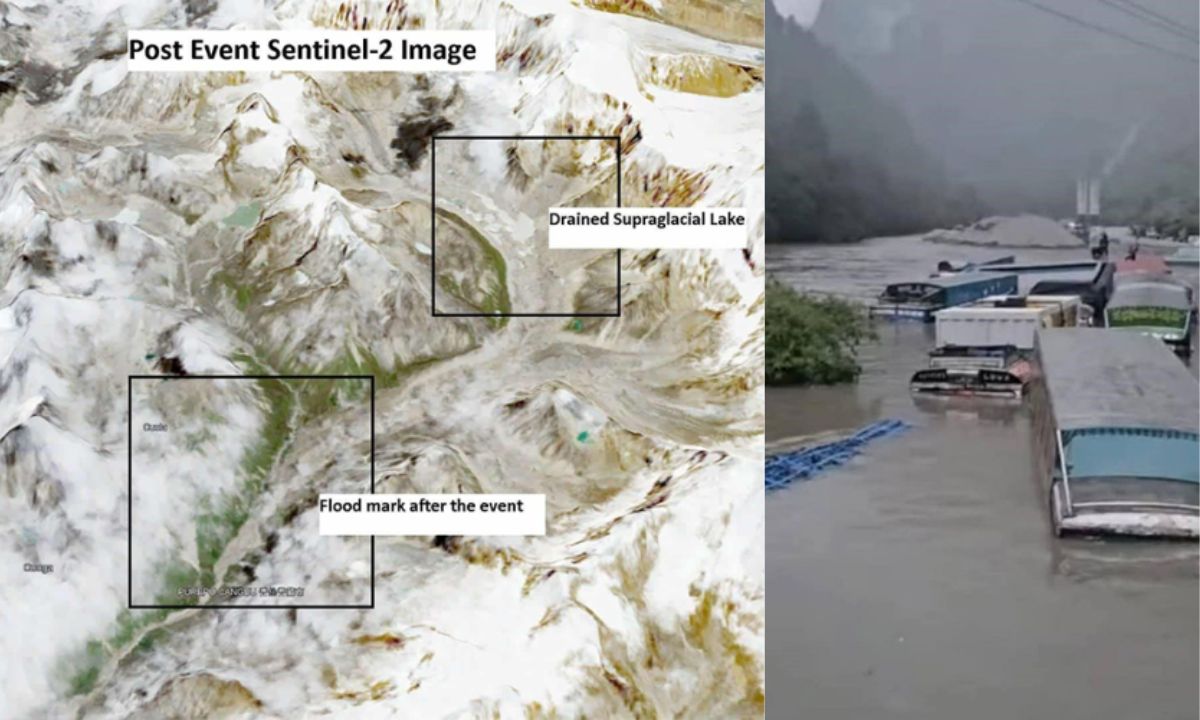Researchers studying satellite images say the recent flood in Rasuwa likely started from a glacial lake formed by melting ice in the Tibetan region of China. They believe water from this lake may have flowed into Nepal, triggering the disaster.
Signs of a glacier lake breach visible
Dr. Nitesh Khadka, in collaboration with Dr. Guoxiong Cheng of the Chinese Academy of Sciences, shared satellite imagery showing a glacier surface covered in debris and a small lake above Rasuwa that seems to have burst. The images show water flowing through the glacier’s inner layers.
Changing lake patterns over recent years
Data reveals that no lakes were seen in this region before 2021. In 2022, small lakes formed, grew larger by 2023, disappeared in late 2024, and reappeared by July 5, 2025. The July 8 image clearly shows water breaking through the debris-covered glacier, potentially causing the flood.
Flood affected multiple districts
The water from Tibet entered Nepal via the Bhotekoshi River, joining the Trishuli River. It caused severe damage in Rasuwa, moderate impact in Nuwakot, and light damage in Dhading.
Government Still Investigating the Flood’s Cause
Authorities say this flood is different
Vinod Parajuli, head of the Flood Forecasting Division, said this flood doesn’t behave like typical glacial lake outburst floods (GLOFs), which usually surge and recede quickly. Instead, this flood lasted for hours, suggesting a cascade effect where water builds up and flows out more slowly.
No heavy rain reported before the incident
Global weather systems showed no significant rainfall in Rasuwa or in the upstream Chinese area before the flood. This suggests extreme rain was not the main cause.
Region previously marked as high risk
A 2021 study by ICIMOD had already flagged a glacier lake in this area as high risk. From 1990 to 2020, the number of glacier lakes in the region increased by 16%, and their size grew by 33%. High-resolution satellite images are still needed to identify exactly which lake burst.
Nepal and China Working Together to Find Answers
Coordination with China is ongoing
Suresh Sunar, spokesperson of Nepal’s Disaster Risk Reduction Authority, said the government is coordinating with China to confirm the flood’s origin. This decision was made during a recent meeting of the National Council for Disaster Risk Management.
ICIMOD also assisting with investigation
Nepal is also working with ICIMOD to better understand the flood’s cause and develop long-term mitigation strategies.
Human Toll and Damage Still Being Counted
Casualties reported, damages being assessed
The flood hit around 3 AM on Tuesday morning, sweeping away infrastructure and homes. So far, 20 people are missing, and 9 bodies have been recovered, though their identities are still being verified.
The flood caused severe damage to the Friendship Bridge, Timure customs office, and several hydropower projects. The full extent of physical damage is yet to be officially reported.







